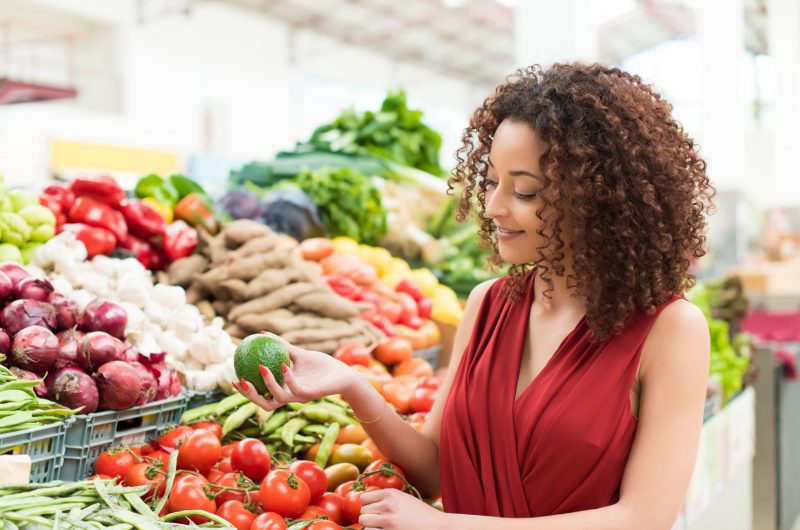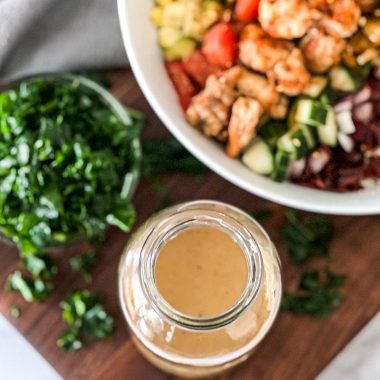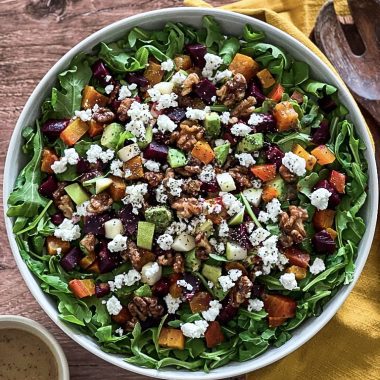You’ve probably heard of the term “mindfulness.” In case you haven’t, it’s essentially a practice of living more intentionally. It involves bringing full attention and awareness to the present moment. The notions of living with intention and present moment awareness are also fundamental bases of “mindful eating” – as is the idea of eating in a neutral, non-judgmental way, and actually appreciating what you eat and the eating process itself.
Here at That Salad Lady, mindful eating is the crux of our Guiding Principles and many of the lifestyle habits we encourage. We want you to appreciate the tastes and flavors of different ingredients and find enjoyment in every eating experience. But our approach fulfills an all too often ignored gap in mindful eating – that is, the concept of knowing the nutritional impact of each ingredient on your health and well-being.
Appreciating a food is one thing – Having the knowledge and confidence to say “why” you appreciate it is another.
Mindful Lessons Learned from Avocados
When I first began my graduate studies in exercise and nutrition science, eating avocados had just become all the rave in the health and wellness realm. Many of my fellow students were bringing avocado toast to class, throwing chunks in smoothies and piling them on salads. While this might sound pretty normal now, back then it wasn’t. Avocados are naturally high in fat, and, during that time, low-fat eating styles were most dominant in mainstream diet culture.
While I occasionally enjoyed avocado in guacamole-form, I wasn’t really about that avocado life. I was a die-hard calorie counter and didn’t deem this high-fat fruit worthy of breaking the calorie bank. But, as I became more knowledgeable and well-versed in nutrition and, ultimately, stopped counting calories, I gained a real appreciation for the many amazing health benefits of avocados – most of which are linked to all the fat they contain.
Avocados are now one of my staple foods and a popular ingredient in our recipes. Whether included in salads or eaten plain, I regularly crave the rich, creamy texture, earthy flavor and buttery taste that’s unique only to avocados. Most of all, I appreciate the deeply nourishing and disease-fighting effects of the good fats housed in each bite. Eating guacamole has never tasted so good and felt so therapeutic. That’s mindful eating – but from an ingredient perspective.
Ingredient-Based Mindful Eating
Fundamentally, mindful eating involves focusing on the process of eating and enjoying the variety of taste sensations offered by different foods, such that you become more aware of your body’s hunger and fullness (satiety) cues. By becoming more in tune with these cues, you’ll start to get a better feel for how to eat. You’ll begin to appreciate foods rather than restricting them. You’ll learn to savor the many flavors offered by the foods themselves.
Science has demonstrated the benefits of mindful eating, especially for people struggling with food addiction and emotional eating. Having struggled with both, I can personally attest to the benefits of eating mindfully. However, equally as important as valuing and appreciating the moment-to-moment experience of eating is knowing the “why” behind the foods you eat. This is where the practice of mindful eating generally falls short.
What if I’d never learned that avocados were rich in “good” fats? Would I have embraced eating such a high-fat food? Even if I did, would the eating experience feel as enjoyable? I think not! There’s power in knowing what you’re eating. The path to avoiding ill health and early death, lies in understanding the real impact of real nutrients housed in whole food ingredients. This can make all the difference in how you eat – not just in the moment, but over the long term.
Through ingredient-based mindful eating you’ll gain more confidence through a greater sense of control over your eating patterns, food choices and ability to fully enjoy your meals. Now, if you feel compelled to whip up a batch of guacamole, don’t. I want you to have your own mindful eating experience to learn from.
Focusing on Whole Food Ingredients
Putting ingredient-based mindful eating at the forefront, our “Nutrition Glossary,” details some of the amazing benefits of the whole food ingredients we commonly use in recipes. Here at That Salad Lady, we believe every whole food ingredient is unique and brings something special to the body and the bowl. I recommend using our Glossary to create your own personalized “ingredient checklist” and let this list guide your food choices.
This is a simple strategy I’ve used to help clients and it really makes a difference. You’ll have plenty of ingredients to choose from, as the Glossary is jam-packed with veggies and fruits, good fats and lean proteins, all of which are rich in health-promoting nutrients and disease-fighting antioxidants. Eating a diet rich in these foods will naturally help reduce cravings, curb hunger and control appetite. These effects are further enhanced with mindful eating practices.
Start by jotting down familiar ingredients you like, and then move on to some unfamiliar ones you’re willing to try to like. Be sure you have a good balance of colors, flavors and textures to mindfully engage your senses and add more excitement to your eating experiences. I also recommend including the number of daily servings you’re shooting for. For instance, if you’d like to commit to eating at least five daily servings of veggies and fruits, specify that.
From here, you’ll simply check the ingredients off as you eat them throughout the day. Much like a general ‘to-do’ list. If an ingredient isn’t on your list, you’ll consciously think about whether it’s worth eating – maybe even reconsider eating it. If you choose to eat it, no worries, at least you thought about it. Over time you’ll start to prioritize ‘healthy’ ingredients over ‘unhealthy’ ones and even crave their flavors without a second thought.
The Power of Knowing What You’re Eating
Here at That Salad Lady, we emphasize whole-food-nutrition for whole-life wellness. To improve your knowledge in these areas, our Glossary and all our recipes highlight basic concepts about food and nutrition. As you gather more information and start to make sense of it, my hope is that you’re able to use your newfound knowledge to make better food choices based on what keeps you healthy and well, energized and feeling your very best.
Once you start doing that, I can almost guarantee that you’ll find yourself mindfully eating for good nutrition while also appreciating all the great flavors and tastes whole food ingredients have to offer. This doesn’t just apply to eating salads either. You’ll be able to apply the practice of ingredient-based mindful eating when choosing what to eat at work, how to eat during travel and even when choosing ingredients for a pizza.







I absolutely loved the information you provide. I too realize the importance of healthier eating and how it helps to improve our life style and life span. I follow you on TikTok and fall in love with how your salads look. I will definitely begin implementing more salad varieties in my weekly meals.
Hi Angela and thanks so much for your kind words and feedback. We’re so glad you’re here! Be sure to take pictures of your salad creations and share images with us:)
Hawai’ian Aloha and Thank you
Mahalo and you bet 😊
Pingback: Food Addiction: When the Struggle is Real - That Salad Lady
Thank you so much for the great information. I wanted to ask you a question. what salad would be good for me as I go through chemotherapy to keep my body healthy and strong Thank you so much for your back….